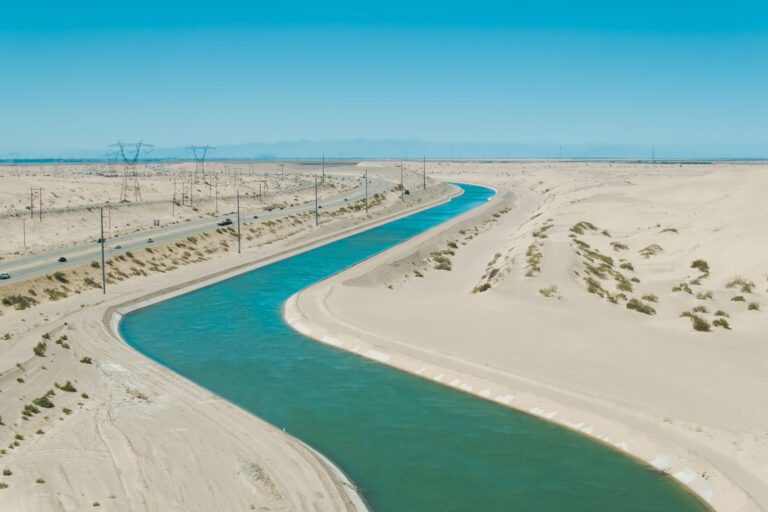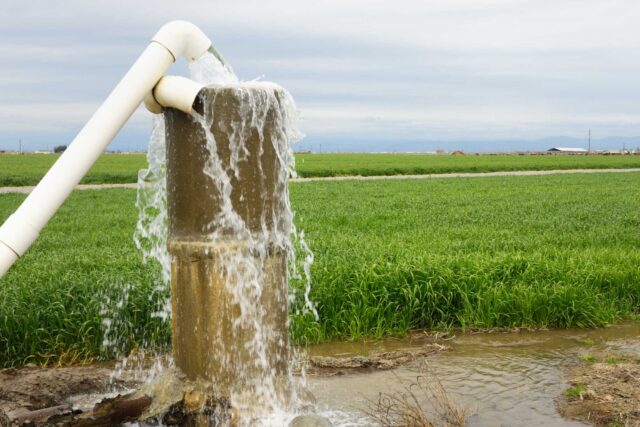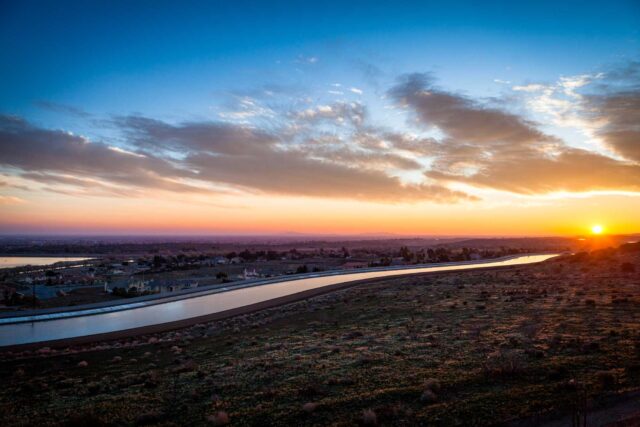Water trading and banking are important tools that can help California bring its groundwater basins into balance by the early 2040s, as mandated by the 2014 Sustainable Water Management Act (SGMA). But the expansion of the state’s water market still faces some bottlenecks, including aging infrastructure and complex regulations. The stakes for preserving California’s groundwater are rising, however, as is interest in improving the state’s water market.
“Groundwater…is a really important drought reserve for California,” said Ellen Hanak, director of the PPIC Water Policy Center, at a virtual event last week. “By the time you get into the second and third dry year, you really need to lean on your groundwater very heavily. One of the challenges in California is that we’ve been leaning on it too heavily.”
Water trading and banking can help. Hanak and PPIC research fellow Andrew Ayres convened a panel to discuss a new report about how to improve the state’s water market in order to aid SGMA implementation and increase drought resilience across the state.
“Water trading, whether it’s temporary, over a long-term basis, or a permanent sale, can significantly lower the cost of managing water demand,” said Hanak. She said flexible water trading within the San Joaquin Valley, for example, could reduce the cost of getting basins into balance by about two-thirds—thereby saving jobs and preserving the region’s economy. Groundwater banking is also a key tool for augmenting the water supply and managing increasing climatic risk, she said.
But creating effective and responsible water markets within the state will take work. Andrew Ayres moderated a discussion with three experts about the challenges and opportunities they face.
Kathy Cortner, general manager of the Mojave Water Agency, described her basin as something of a groundwater success story. After an adjudication process that lasted six years, the basin entered into a judgment in 1996. “What that judgment did was set the framework for allocating a base water right. Over time, the judgment called for a rampdown…it provides a path for people to adjust to a declining amount of water to pump.” There were difficult years, she said, but trading allowed farmers to adjust gradually.
Stephanie Anagnoson of Madera County says her county has land in three sub-basins. The county is the lead groundwater sustainability agency (GSA) for ground-water dependent lands in these basins. The GSA has been working to address groundwater overdraft through a portfolio of programs, including aggressive recharge activities and land repurposing. It is also one of the first to adopt groundwater allocations under SGMA. “What would have been helpful for us was step-by-step [information] on how to develop an allocation, because that took about two years,” Anagnoson said. “And while there are some white papers, there certainly wasn’t state guidance on that.” The GSA has also been exploring the establishment of a groundwater market for trading allocations of sustainable yield—initially with a tool that allows water users to simulate trading.
Thaddeus Bettner of Glenn Colusa Irrigation District said that despite glitches with water markets, things are improving. “DWR has been great about funding the development of our GSPs…We really appreciate the groundwater division in DWR for that effort,” he said. Furthermore, “DWR and the Bureau of Reclamation have also developed on an online approval process [for surface water transfers] that has been really helpful to expedite the process.” Still, hurdles remain.
Near the end of the discussion, Ellen Hanak shared the news that 15 minutes before the event began, the governor had signed several bills that include money for improving the state’s water resilience, including a new program for multi-benefit farmland repurposing under SGMA. “I know it’s small, but it’s a piece of good news,” she said, ending the event on a positive note for a drought-plagued state.
We invite you to watch the event video.




